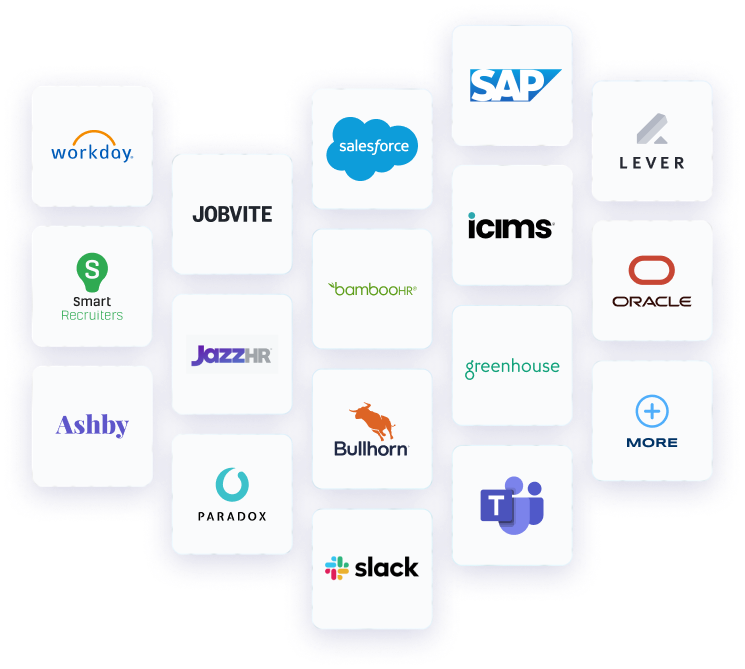

Crosschq Blog
Effective Recruiting Plans for Hiring During Modern Times

Shopping for new talent, as opposed to developing your current talent or taking on a freelancer, is an expensive and important commitment.
A recent SHRM study found that the average cost per hire in 2022 is approximately $4,700. And if you include soft costs and employee churn rates that necessitate the hire, the actual number can be two-to-four times the incoming employee’s salary.
That’s why a recruiting plan and predictive hiring technology, like Crosschq, are so important. Below is everything you need to know about developing an effective recruiting plan to land quality hires.
What Is a Recruiting Plan?
Usually created as a physical document or digital aid, a recruiting plan is a predefined strategy or process for recruiting teams to follow in the hiring process. Recruiting plans help streamline certain aspects of the hiring process and provide a tested, standardized model for landing new hires.
Because every company has different needs, there isn’t a one-size fits all recruiting plan. However, there are some best practices and shared strategies that you can integrate into your own business model.
How Do you Create a Recruiting Plan?
So what do you include in your recruiting plan? While you should modify your plan to take into account your unique organizational needs, the below points will provide a basic model that most hiring teams can follow.
Whether you have a physical document or digital aid, your plan should include:
- Your recruitment goals for this hiring period
- Vacancies that need to be filled, including salary for each position
- Target candidates (qualities and qualifications)
- Sourcing methods
- Interview process overview
- Create a recruiting budget
Key Considerations for Creating Recruiting Plans in Today’s Environment
The onset of a recession is probably the most critical and pertinent point to underscore in today's hiring environment.
Just in 2022, we’ve seen Robinhood lay off more than 1,000 employees, 7-Eleven lay off more than 800 employees, Vimeo lay off 6 percent of its workforce, and Netflix let go of over 300 hundred workers.
If you haven't already started conducting layoffs, it might be a good idea to start preparing for them. Other key considerations you want to consider when creating a recruiting plan:
- Remember to limit unconscious bias so that you can drive equity, diversity, and inclusiveness in your hiring process.
- Consider if you have the ability to offer hybrid or remote positions, which might make you more competitive as a recruiter.
- Keep in mind your company culture and mission when evaluating, interviewing, or assessing candidates.
- According to Gartner, turnover rates will increase by 20 percent this year to 37 million Americans quitting their jobs. You want to keep an eye on hires that might be looking for a short-term gig.
Proven Ways to Build Better Hiring Plans During The Current Hiring Market
So how can you prepare for the above concerns? Below we’ll look at some proven ways to prepare for the current challenges of the hiring market.
- Know where to look for quality hires. With Crosschq, you have access to an exclusive talent opt-in network of quality candidates looking for the next step in their careers.
- Utilize employee assessment tests to get a better idea of the qualities and capabilities of a candidate.
- Automate your reference check process through a modern, 360 reference check solution, like Crosschq. Reference checking with Crosschq is faster, simplers, and more detailed. You’ll be able to evaluate things like soft skills, candidate strengths and weaknesses, and comparisons of self-reference scores with peers and managers.
- Take advantage of hiring insight solutions that track quality of hire, performance, and retention among your cohorts.
- In a volatile hiring market, you should be taking into account worst-case scenarios. You can do this by having multiple recruiting plans that consider a situation where you have mass layoffs or churn rates.
Modern Recruitment Plan Example:
A modern recruitment plan example looks a lot like a traditional one, but it has a few added features and tools you can integrate into the process. A modern recruiting plan will look something like this:
- Define your recruitment goals for this hiring period.
- Identify vacancies that you need to fill, including salaries for each position.
- Potentially have two or three options for this. With the uncertainty of the recession, you may have a higher churn rate or layoff rate than you anticipated.
- Identify target candidates (qualities and qualifications).
- Narrow down sourcing methods.
- Crosschq analytics can help demonstrate which hiring channels are most effective for your industry.
- Gather candidate reports on potential candidates through a 360 reference check service.
- Reduce unconscious bias with IO Psychologist vetted surveys.
- You can use Crosschq analytics to identify which interview panels are the most accurate at predicting top talent.
- Create a recruiting budget.
Final Thoughts: Recruiting Plan
As we enter the final stretch of 2022, we are facing some unique challenges in hiring and recruitment.
A detailed and modern plan that gives you greater insight into your candidates removes unconscious bias, takes into account volatility in the hiring market, and will enable you to face these challenges with confidence.
At Crosschq, we’re committed to taking the guesswork out of hiring. Our 360 reference check technology will eliminate unconscious bias, gather candidate reports within 48 hours, and streamline tedious processes of the hiring process.
Check out a free demo to learn more about how Crosschq can shape your recruiting plan today.
Take the Guesswork
Out of Hiring
Schedule a demo now



%20-200x43.png)





